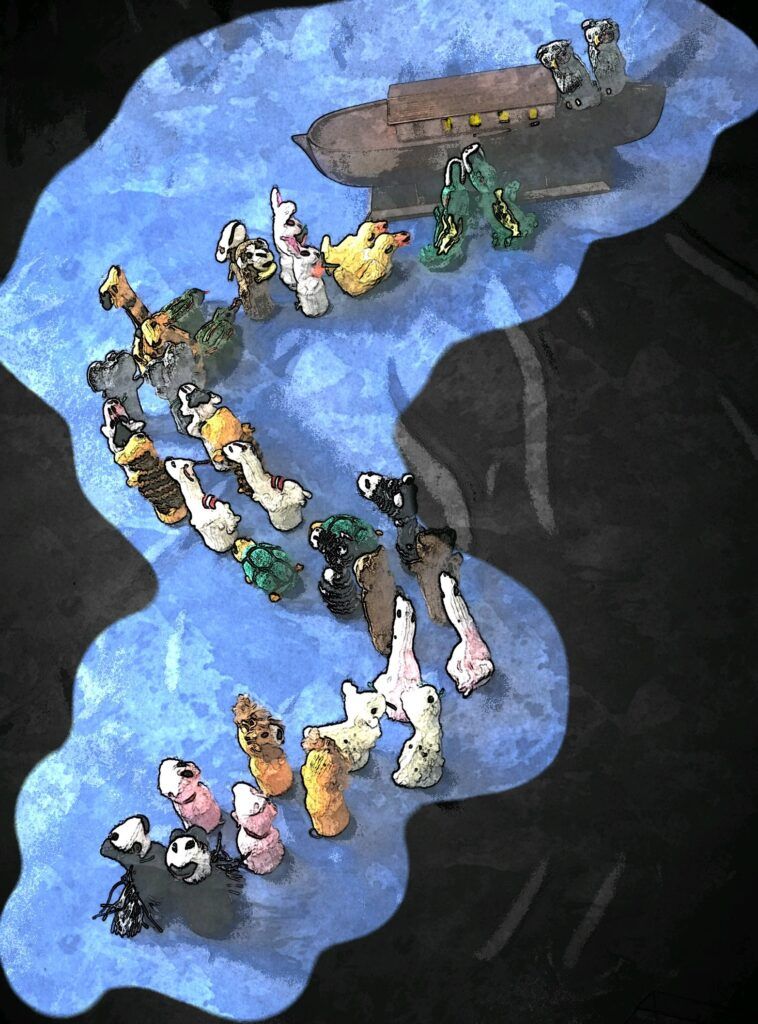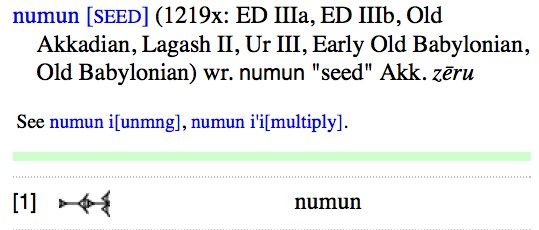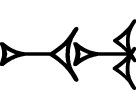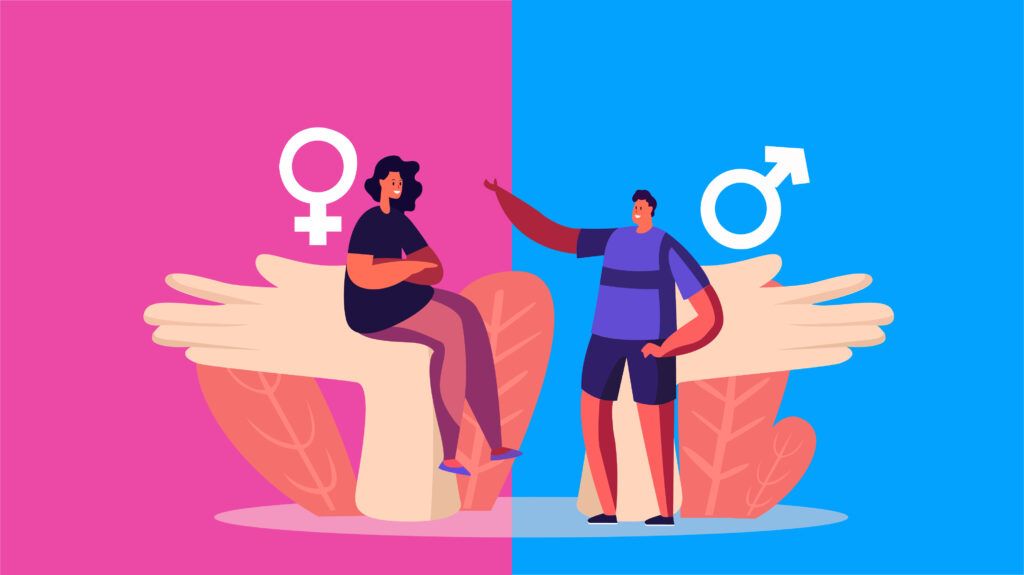I can clear a playgroup kitchen faster than you can say “Chinese footbinding.” I didn’t even bring it up. My neighbor did, not knowing that I had a degree in Masochistic Beauty Practices. My college was so feminist, I got a Bitchler’s instead of a Bachelor’s. Their theory is that a “bitchler” is like a “bachelor” in that there is no one-to-one correspondent between the bitch/bache and a mate; therefore, they are a kind of free agent, like an elite athlete. With a “bitch,” a bachelor can make a batch of sons of bitches (and daughters of bitches…). That freedom has repercussions for the female, however. This is why a Bitchler’s is a slightly different degree than a Bachelor’s: with a Bachelor’s, you can get a job; with a Bitchler’s, you are already a working girl.
It was my shrink who got me hooked on masochistic beauty practices; I learned about footbinding while doing research for her (for discounted rates). Other masochistic beauty practices included swallowing arsenic (turns one’s skin translucent) and ingesting belladonna (widens one’s pupils), not to mention corsets…another type of binding. If your focus is on fecundity, footbinding makes more sense frankly. As Science Spouse (what I call my husband in order to protect his money-earning identity) points out, pregnant women are the rate-limiting step to creating a civilization. This means that the number of fecund females matters.
Fecund: what do you suppose is at the root of that word?
C U Next Tuesday!
OED won’t admit it, writing obliquely, “In the 16th century, the spelling was refashioned after Latin”: “fecundus” means “fruitful.” Fruit is the product of fertilization; “fruition” is the completion of a plan(t). Our written scripts are impregnated (!) with sexual iconography subconsciously driving us to our own extinction by over-hyping procreation. Embedded in all written language is the importance of female mammals when building a civilization. Due to the fact that mammals propagate via the female’s vagina, the vagina’s recognizable “V” shape shows up early in writing. This is because those with vaginas produce a variety of products and experiences. Female mammals have the trinity: milk, offspring, fun for males.
What do a farm and harem have in common?
They are both breeding prisons: one male, many females. A breeding prison must contain more females than males in order to be successful. Biologically, a male harem does not work. One woman, lots of guys will not create a dynasty. For a dynasty, you need a “gynasty.” When you’re focusing on fecundity, females take precedence.
In Australia, apparently “cunt” is every other utterance, but in the U.S., we are shocked by the “C-word.” We spell it aloud, dropping the vowel when writing, as if that “U” were the evil culprit (which it is because it represents the uterus). Yet, somehow, adding “-ry” to “cunt” makes it all okay. We forget that we say “cunt” every time we say the word “country.” In reality, a country is a “cuntry” because we count by cunts. We count by cunts because males are generally dispensable. We only need one.
And that’s what happened: Genghis Khan has 16 million decendents living today because he did not ask those to-be mothers for consent.[1] He had non-consensual sex with women because he was a conqueror. Non-consensual sex was not restricted to just conquerors, however. Consent is a new idea. Men are like, “Really? After all these years? Now we need consent?”
Footbinding kept women from running away, corsets caused women to faint, and high heels hamper walking: all methods to prevent women from being a free agent. This is why that word “bitch” is so biting: How dare you go unregulated? Womb-men (women) are too important to be allowed volition. When something is of value, you have to keep it safe. You need to keep track of it. You need a system. We always hear that writing started as accounting, but less known is that much of the accounting was for female mammals. Females were valuable items that men owned.

Using female mammals as machines, humans began to produce on a massive scale. Production drives the need to keep records. The sudden abundance of valuable resources necessitated the invention of a more permanent tracking system. This abundance occurred after enough humans understood the relationship between sex, conception, and birth. Forty thousand years ago in Australia it would seem that the newcomers didn’t understand basic reproduction because they—or something—wiped out all the megafauna in a short period of time. By domesticating animals, you learn about the facts of life. By killing them all, you only learn about starvation.
We can imagine that farmers, who could now control animal breeding by tethering or other means, watched two mammals having sex, and then saw the sequestered mother produce the offspring of this union a short time later. It’s hard to connect reproduction in grain with reproduction in humans. It’s much easier (and potentially more interesting, depending upon who you are) to witness reproduction in one species of mammal and make the link to another species.
Those who connected the similarity of offspring with the male animal they previously had seen having coitus with the mother became visionary in their knowledge of simple genetics. By the time the Bible was written, men understood conception so well that knowledge of selective breeding—demonstrated by the separation of the white sheep from the other colors of sheep in the Laban-Jacob story—plays a major role in the legends of flock acquisition as well as white supremacy. Breeding animals was a way to play God. Breeding with women was a way to create future warrior/workers in less than a year, and then (from a male dominator standpoint) those women were ready to breed again.
The evidence that men understood paternity at the dawn of writing is found in the forms of writing itself. Here is the Sumerian character for “seed,” documented 1,219 times according to the Pennsylvanian Sumerian Dictionary.[2] This depiction of “seed” makes it clear that someone understood the “mechanics” of procreation approximately 5,000 years ago.


“Seed” in Sumerian
Considering that humans have been genetically identical for circa 200,000 years, the concept of “Dad” (right) seems to be relatively recent. Males’ realization of paternity’s significance propelled written language because ownership became personal in the form of sons: men felt they could live forever. Daughters became fecund pawns to be traded, in order to start the process over again. Patriarchy and writing evolved together because they functioned symbiotically. The male, less important biologically, became more important psychologically because writing elevated male stature, and consequently male power and control.
The first evidence in written story form that humans understood the relationship between copulation and procreation is in the Epic of Gilgamesh, written approximately 4,000 years ago. Found in Sumerian cuneiform, as well as in the languages of neighboring Mesopotamian cultures, the Epic of Gilgamesh is a tale focused upon the eventuality of death. The story starts with the king having non-consensual sex with all the brides on their wedding day before the grooms can, a genetic strategy similar to Genghis Khan’s. Early in the story there is a flood created by the head god in order to destroy humanity. A lesser god betrays the head god by instructing a mortal to build a boat in order to save “all the beasts and animals of the field.”
The Noah’s Ark story in the Bible, written more than 2,000 years after the Epic of Gilgamesh, takes this flood story and refines it by specifying the importance of saving two of each species and these two must be male and female.
Noah’s Ark is the world’s first sex education.
The image of “two by two” is welded into our psyche, whether or not we are religious. The Noah’s Ark story wouldn’t have nearly the staying power if the line had been single file. “Two by two, male and female”—it’s a recipe for birth. The Bible is an instruction manual which says: Stay in your lane! You can’t reproduce with another species, no matter how often you try.
It took the domestication of animals for men to understand the role of the father, and once they did, they ran with it. Men began keeping records using imprints in clay that depicted simplified genitalia that represented both the sex and species of the first domesticated mammals:

These symbols above are 5,000 years old.[3]They have been arranged by me to denote a kind of porn version of Noah’s Ark to facilitate the realization that early writing was based upon genitals. Why wouldn’t it be? Producing more was synonymous with survival. Note how the male symbols are all pointy, and the female symbols have “V” shapes. The fact that there are 8,000,000,000 humans on this earth tells us that we have focused on reproduction. The vagina is the entry and exit point for this cloning capability, so it is logical that the shape of “V” has meant “female” for at least 6,400 years (as seen in Schmandt-Besserat’s token data[4]). After the domestication of sheep around 10,000 years ago, it seems to have taken humans about 3,000 years (+/-) for the significance of females to make it into written language, but once it did, that association never left.

Sumerian for “ewe”
The above character means “ewe” or “female sheep.” Without the “V,” the meaning is “sheep.”[5]
Female sheep – sheep = female
Simple math.
V = vagina = female
This is the most consistent symbol-to-meaning relationship in the world.
Female mammals have vaginas, which perhaps explains the male tendency to conflate women with beasts. Besides “bitch,” which is a “female dog,” there is also “vixen,” “fox,” “cougar,” “kitten,” “pussy,” “filly,” “jenny,” and “nag.” Men viewed women as stable companions in the same way they viewed horses: something exciting to put between their legs. A “broodmare” is a female horse used for breeding. A bride’s duty is to breed. The future mother is expected to produce heirs: therefore, “bride” is really the noun form of the verb “breed.”
Who marries a bride?
A groom.
What does a groom normally do?
Takes care of horses.
What does the horse wear?
A bridle.
What does a bride wear?
Bridal attire.
Take the “B” off of “bride,” what do you have?
Ride.
“Gangnam Style” is about riding imaginary horses…but what are they really doing?
Miming sex.
What’s the lasso for?
Roping. (Right…)
What does Psy sing?
“Sexy lady.”
Breeding involves animal husbandry; the husband’s family bribes the brides’ into giving their daughter away in order to create a brid(g)e to posterity. The bride is the bridge that creates brothers. The bride’s family sells her for a price, but many brides are stolen. Helen of Troy was abducted twice! The Robber Bridegroom, a 1970’s musical, is considered romantic, oddly enough. The Fantastiks, long on Broadway, had “The Rape Ballet/Happy Ending” song. Europa, a Phoenician princess, was allegedly so sexy, Zeus had to rape her (while he was a bull), and now we have an entire continent named for non-consensual sex.
It’s a god thing: God had non-consensual sex with Mary, and that just throws him out of my friend group. To God, Non-Consenting Mary was “a piece of ass.” Mary was equated with mares because that’s what the patriarchy focuses on: breeding females. Why else was Jesus born in a manger? Because that’s where they stuck pregnant women! Banished to the Red Tent if you were lucky, otherwise, it was into the barn with the other mothers. In written language, mothers are mothers regardless of their species.

Jared Diamond stresses the close relationship humans had with their animals in Guns, Germs, and Steel yet downplays a special story—a story that everyone who has read the book professes to forget—and that’s the tale of a man who has contracted a disease but does not speak English so he needs his wife to translate his problem to the doctor. In the doctor’s office, he admits to having recently visited the family farm. The next thing he says causes his wife to club him, and she runs down the hallway and disappears. The doctor and attendant have to revive the guy before they find out—somehow…new translator? doesn’t say…oh, it does! The guy’s “broken English” allows him to admit to having had “repeated intercourse” with a sheep on the family farm. Am I imagining the implication that this could have been a regular thing between him and the sheep? Though Diamond uses this story (on page 196—not 169 like you might expect) to exemplify how close some people get with their animals, he also suggests this behavior is aberrant: “Very few of us love sheep in the carnal sense that this patient did.”
Uh, Jared, actually almost 1/5 of the male population who grew up on farms admit to having sex with farm animals. Kinsey is a good read if this material is foreign to you. In 1947, Dr. Alfred Kinsey founded the Institute for Sex Research where he was famous for collecting data on human behavior. When I tell people that 17% of men who grew up on farms admit to having sex with animals, Science Spouse chimes in with “—and the other 83% are liars.” (You see why I’m protecting his identity?)
The male’s love of sex is why we have done so well as a species because women can die from one time of having sex due to the hazards of childbirth. Women do not drive the birth rate. At eight billion people and counting, we need to direct more men toward sheep.
The painful truth of our origins—like Eve’s apple and Pandora’s box—unleashes a Trojan Gift Horse-ful of unpleasant realizations. But better to know the truth: we are enamoured with the behinds of animals, so much so that people wear them as hairdos: pony tails and pig tails. It doesn’t stop there. Even as children, we must participate in a parody of animal abuse. Spun around and made dizzy while wearing a blindfold, we are expected to identify the anus of every donkey, and—in public—pin that tail! Purposefully disabled—so we won’t have the insight to wonder at the appropriateness or origins of this birthday party ritual—we dutifully re-enact early man’s closeness with the asses of four-footed asses. We might not give a rat’s ass, but we sure care about a donkey’s derrière. Fertility conditioning disguised as fun. The birthday party beating of the piñata bears introspection as well.
And no wonder you don’t look a gift horse in the mouth.
Because that’s not where the action is.
[1] https://www.nature.com/news/genghis-khan-s-genetic-legacy-has-competition-1.16767
[2] Pennsylvanian Sumerian Dictionary, http://psd.museum.upenn.edu/nepsd-frame.html
[3] Nissen, Hans J.; Peter Damerow, Robert K. Englund, and translated by Paul Larsen. Archaic Bookkeeping (USA: University of Chicago, 1993), page 89.
[4] Denise Schmandt-Besserat, Before Writing, From Counting to Cuneiform, Vol. I, (Texas: University of Texas Press, 1992), page 143.
[5] https://www.originofalphabet.com/v-meant-female-6400-years/

